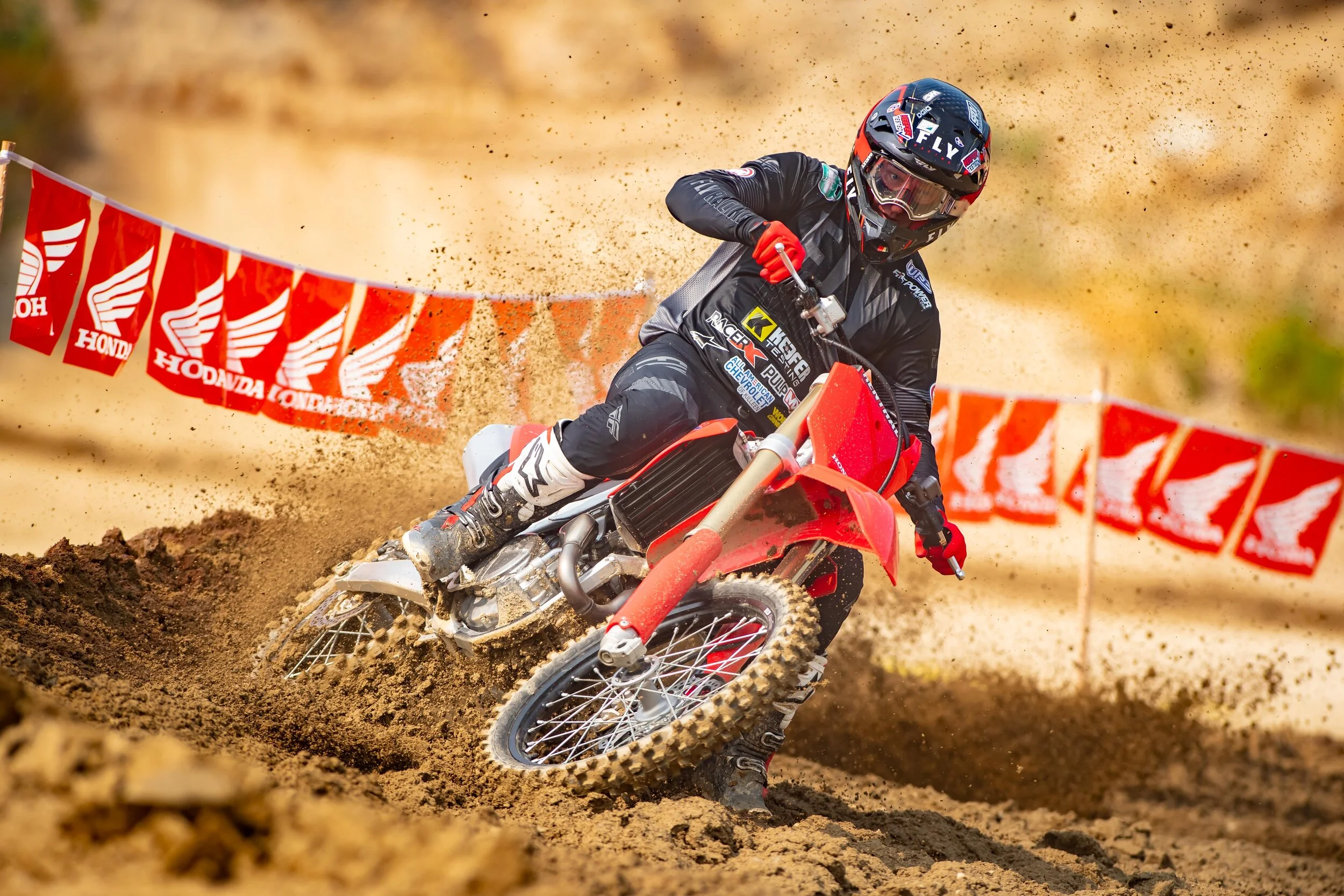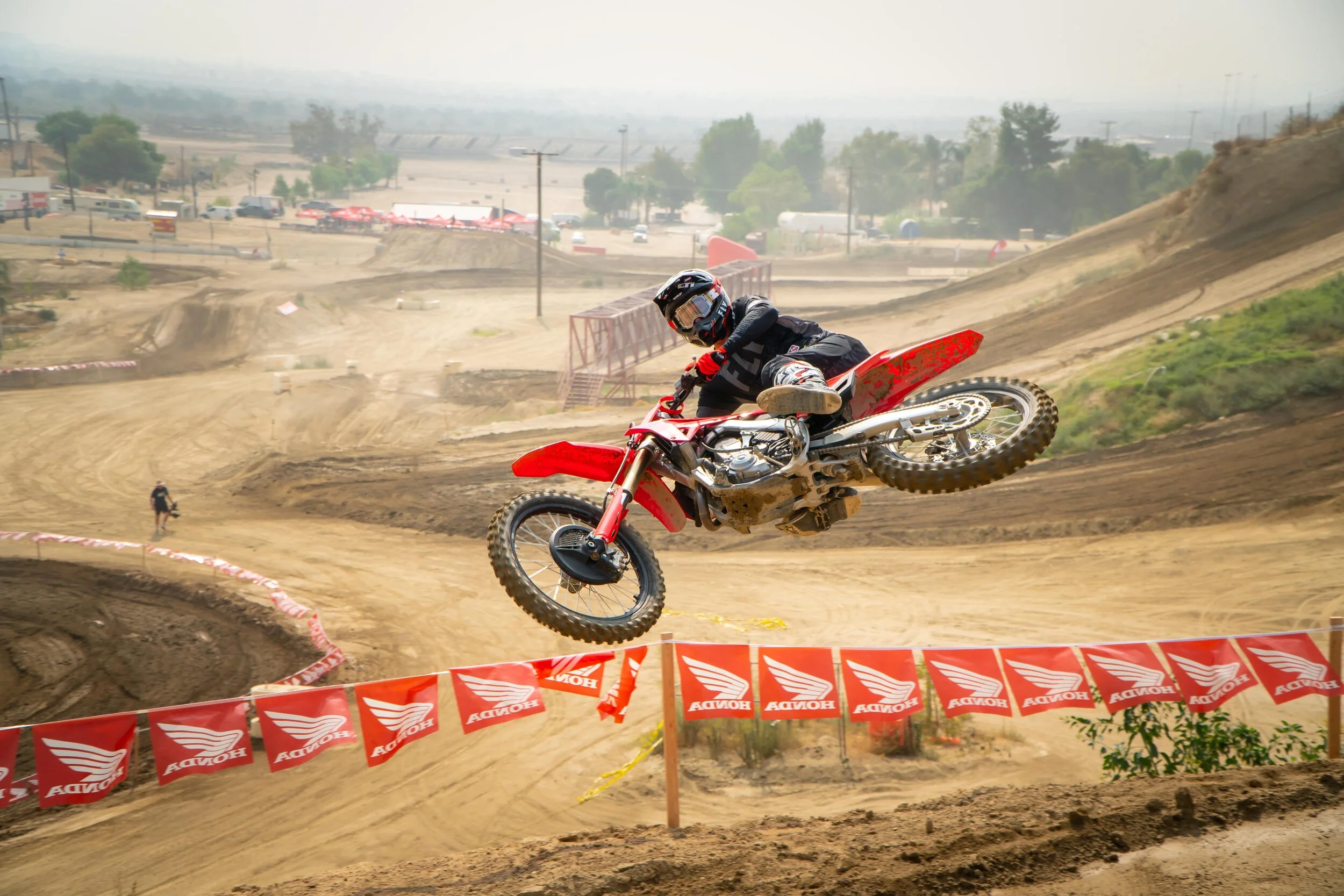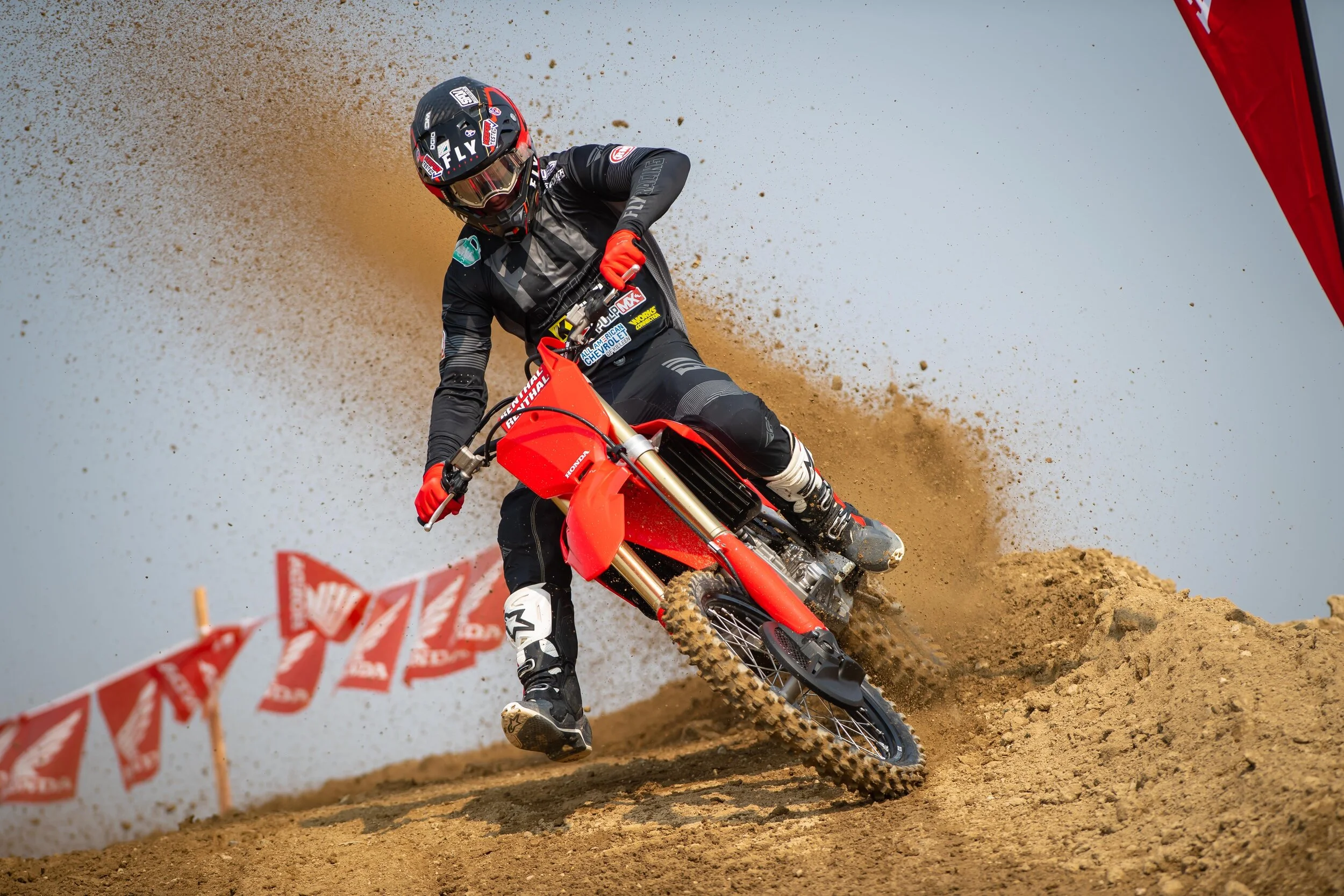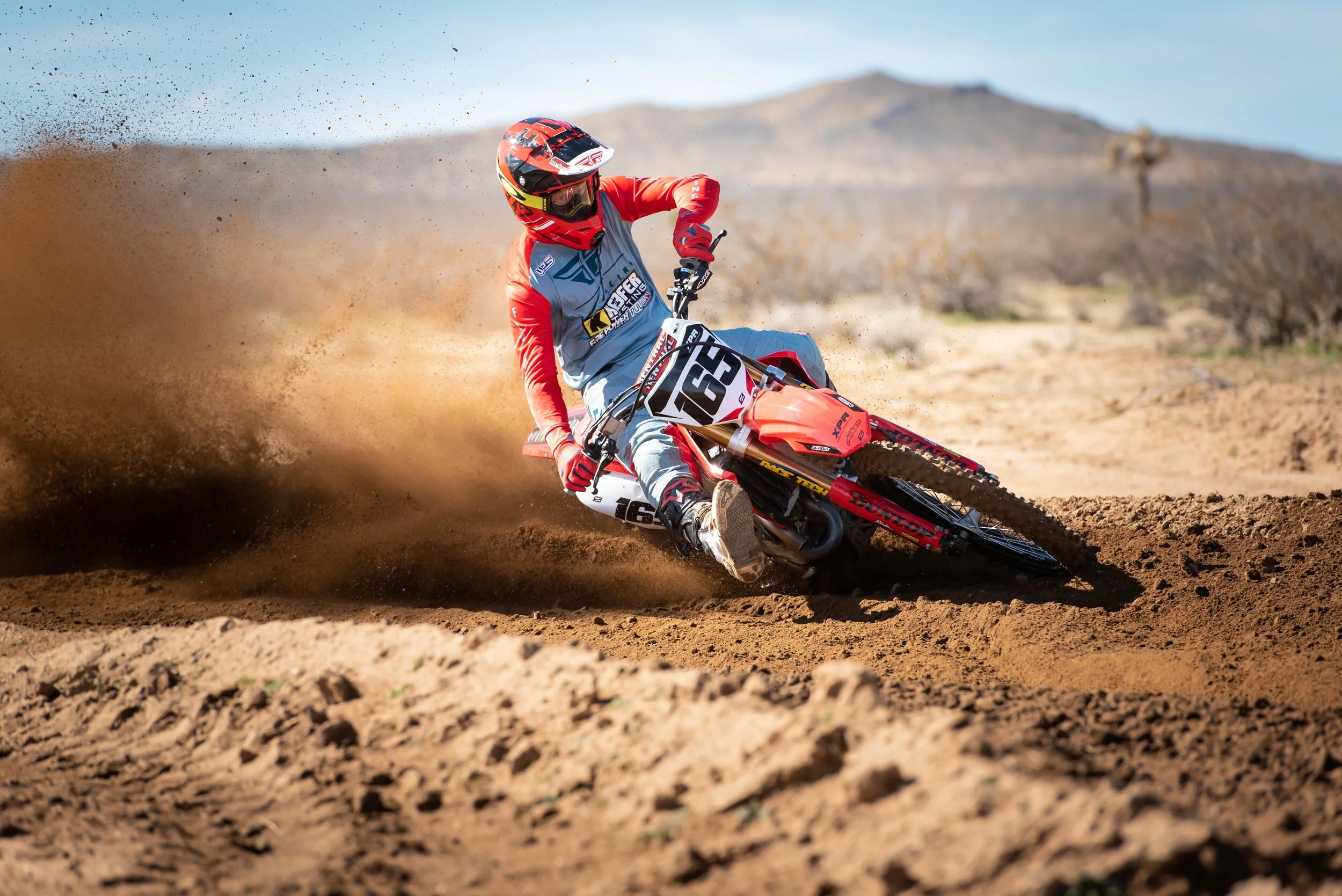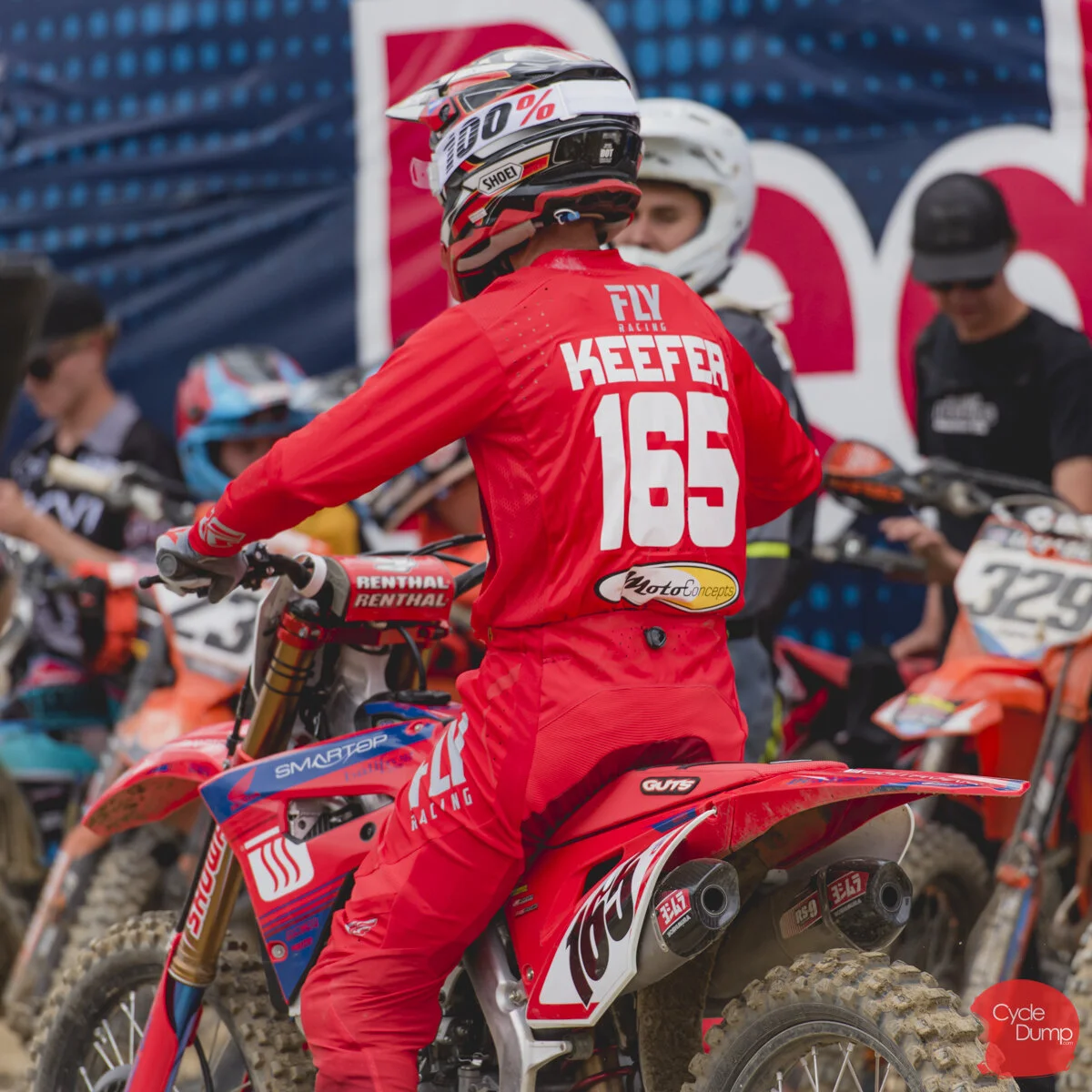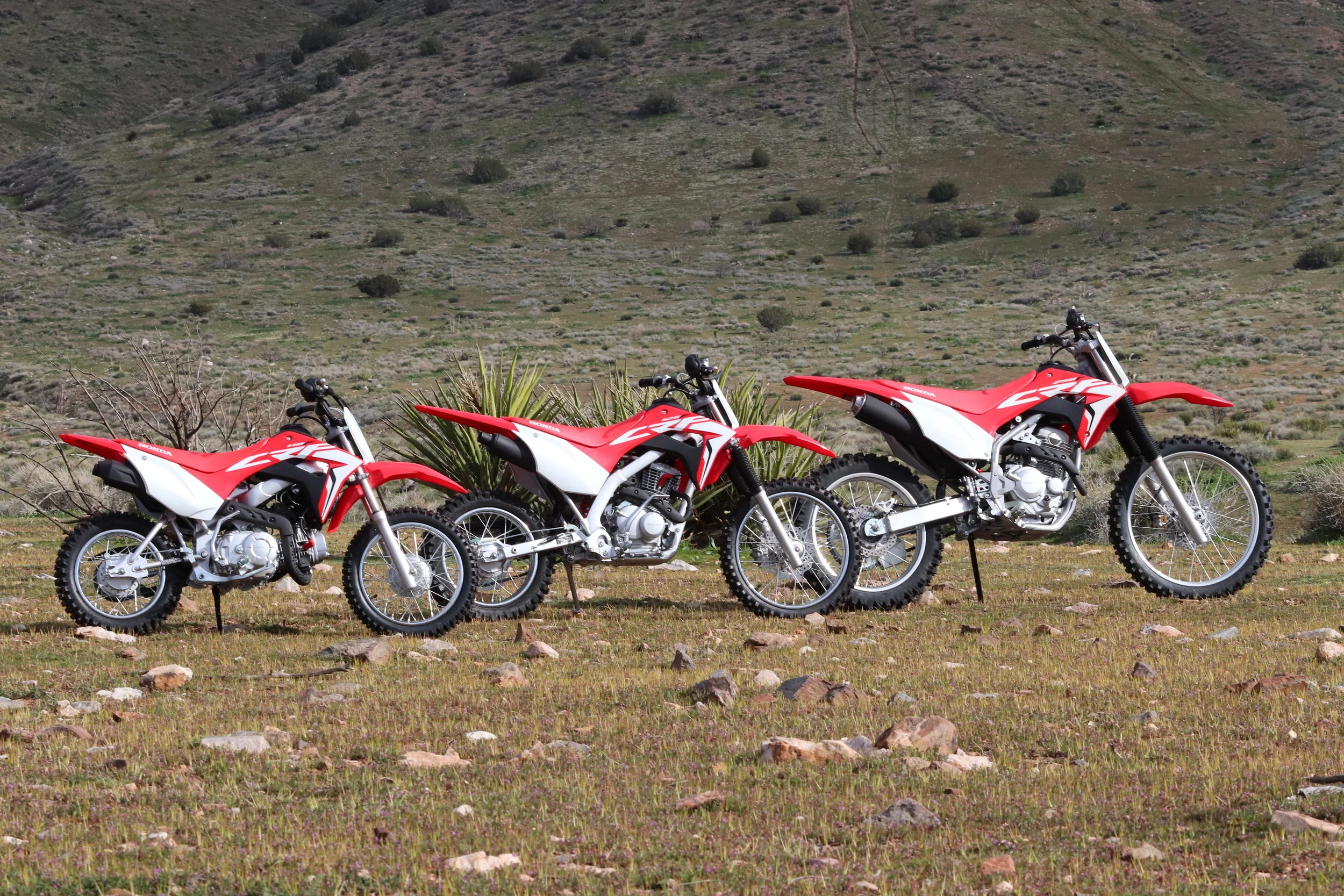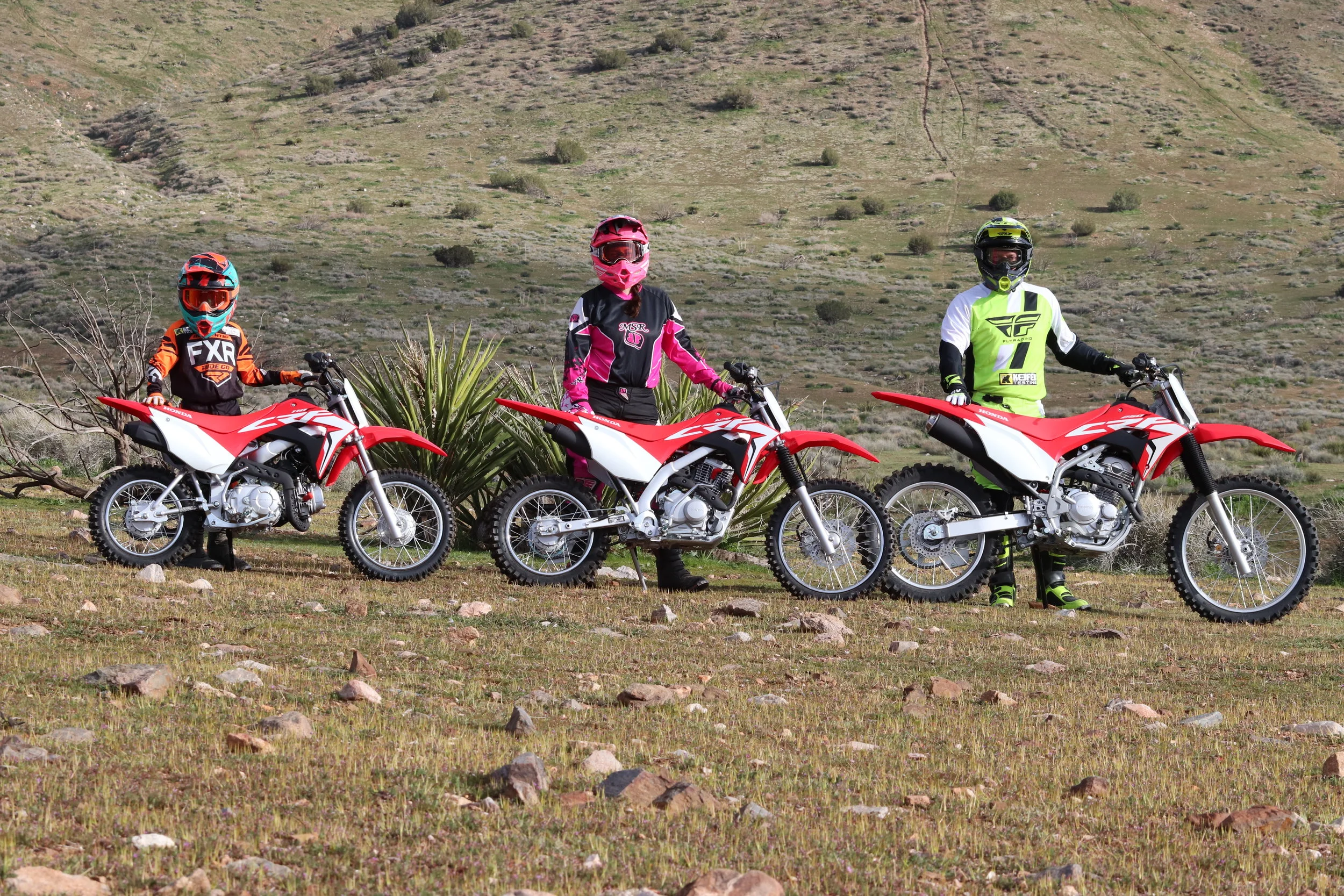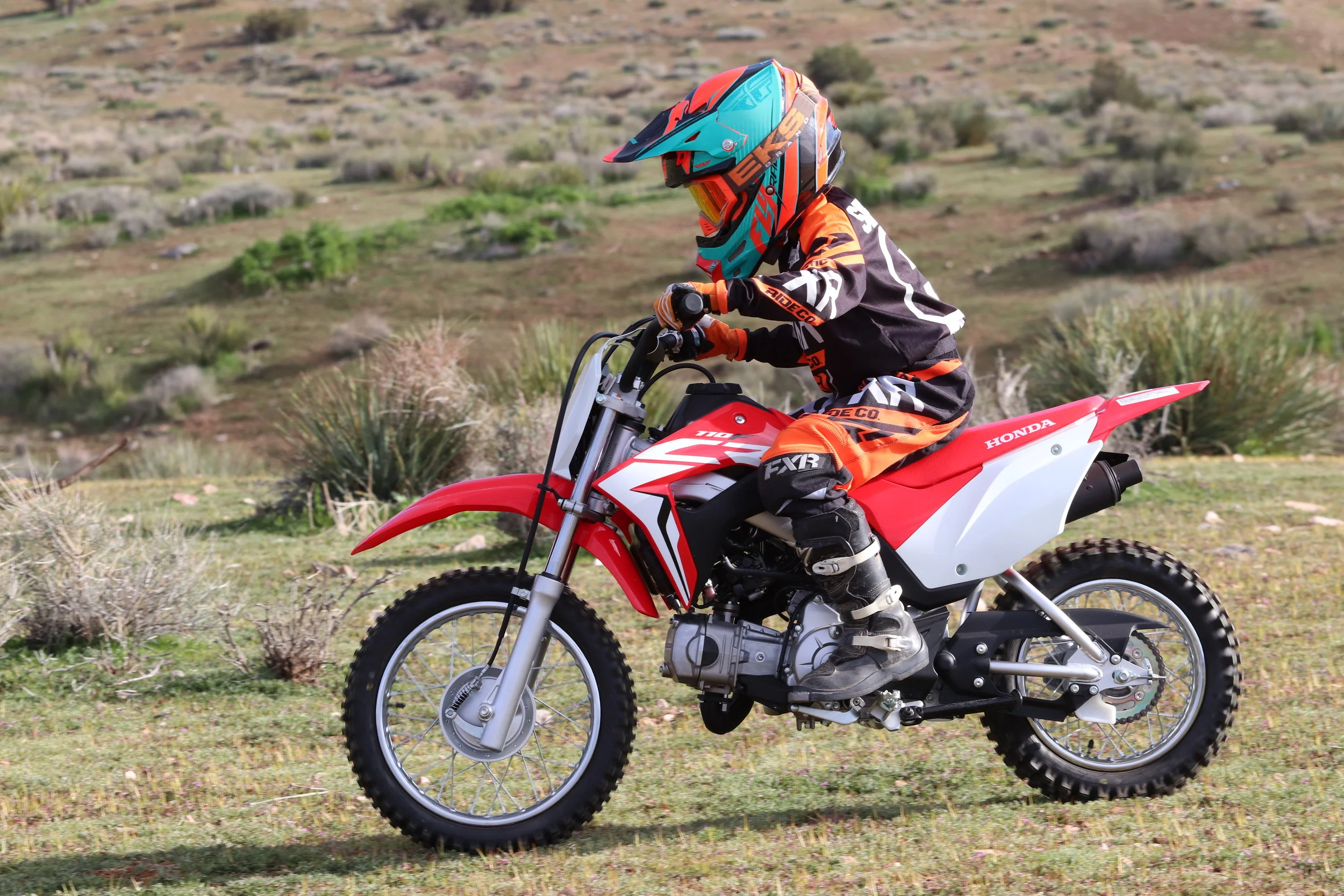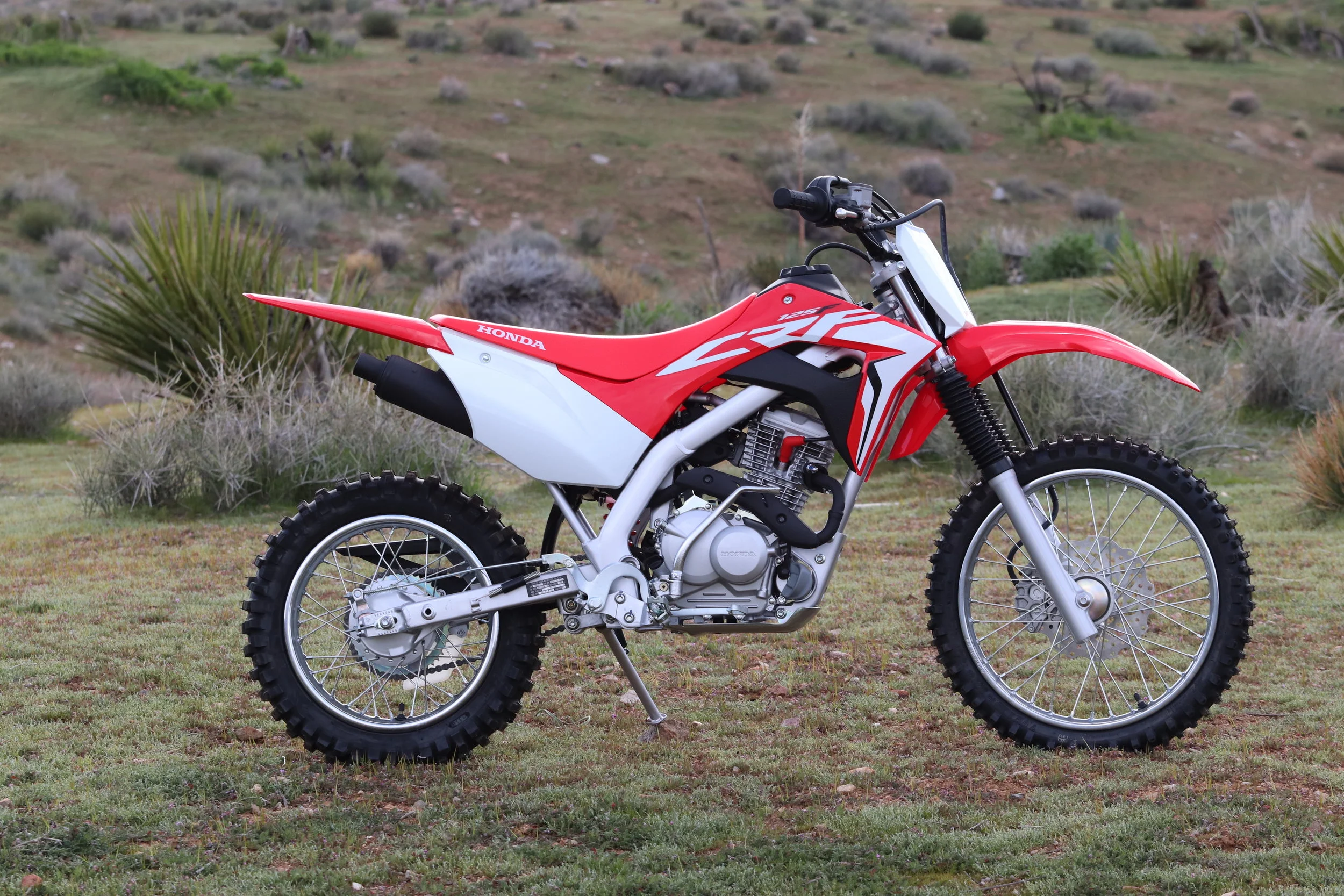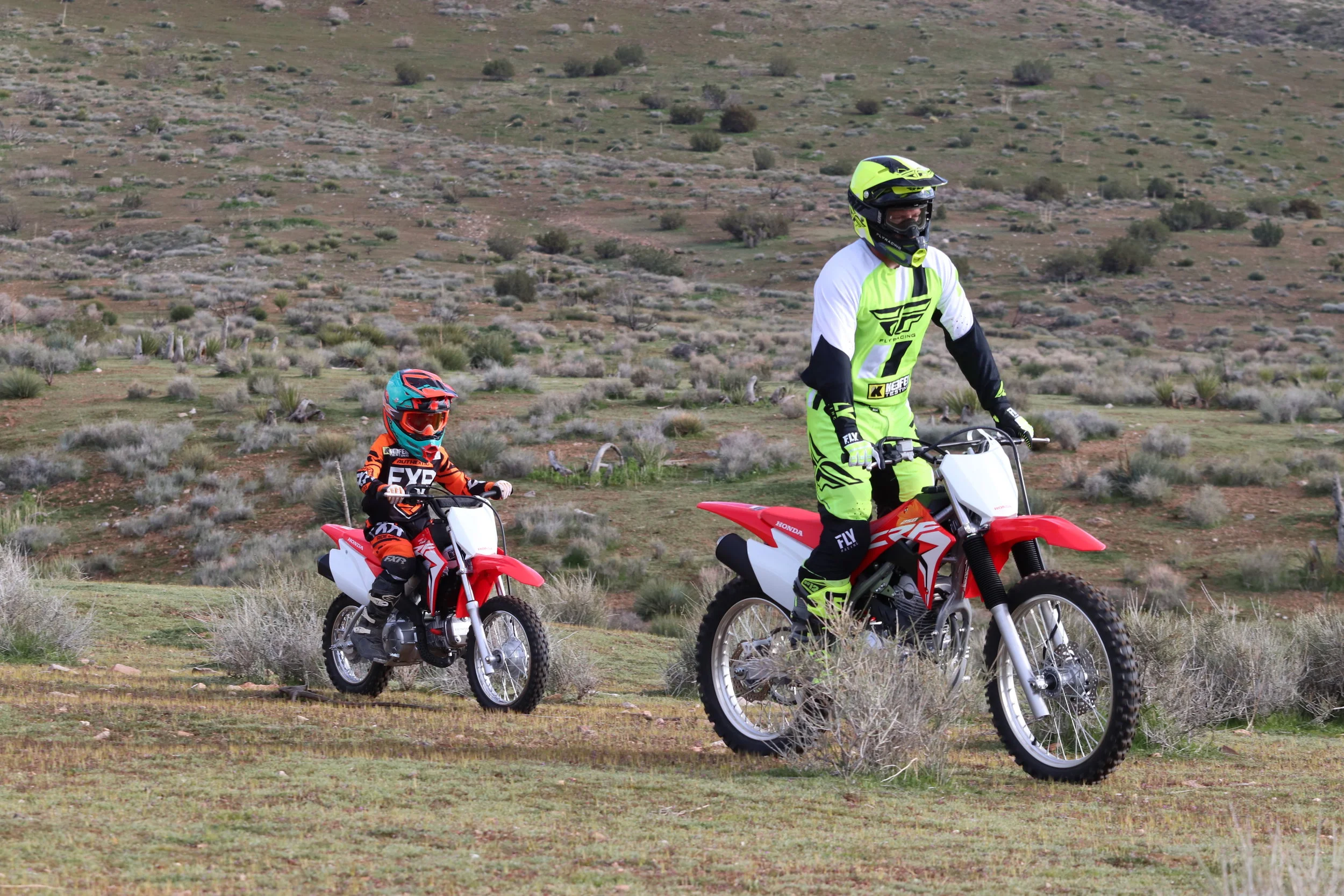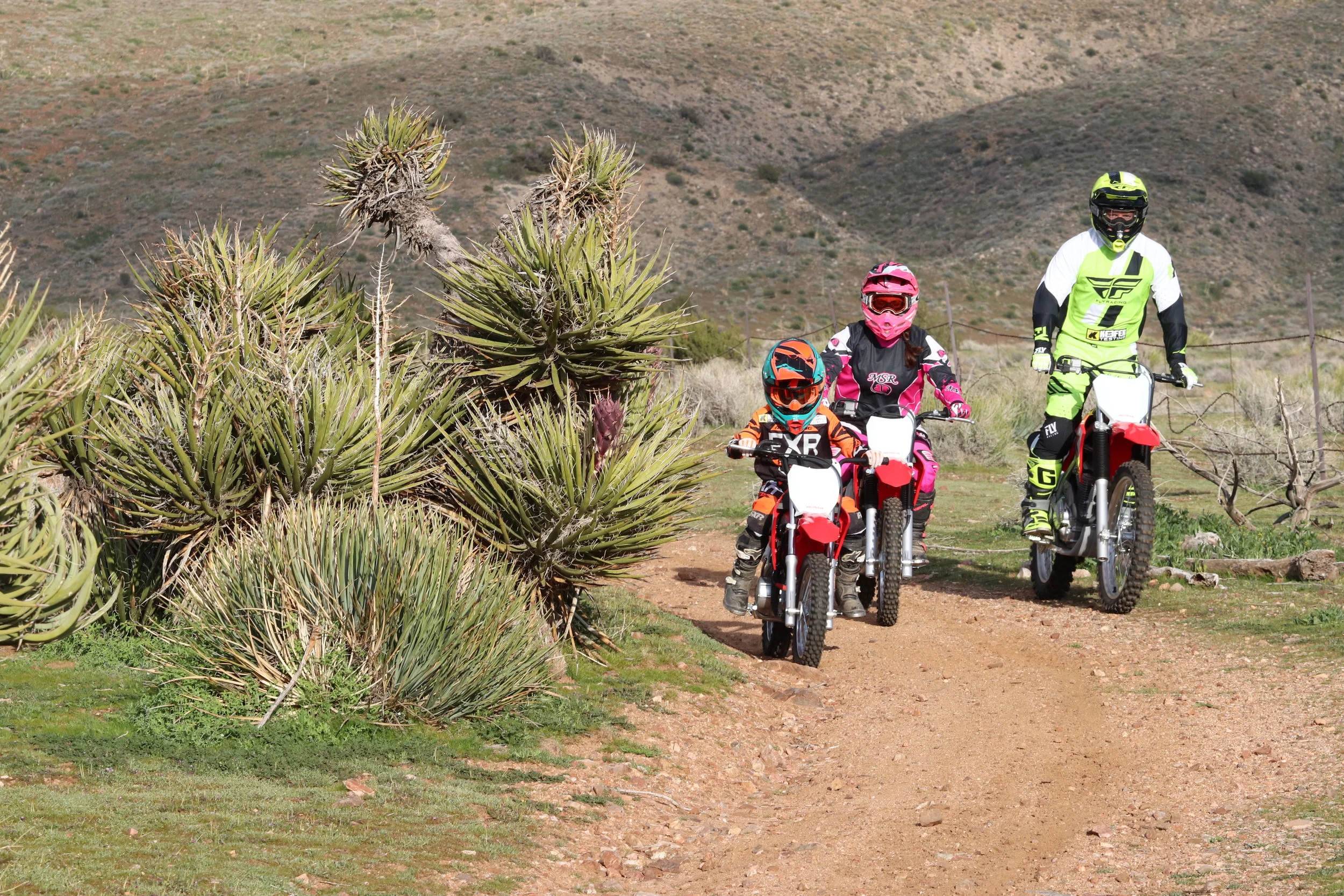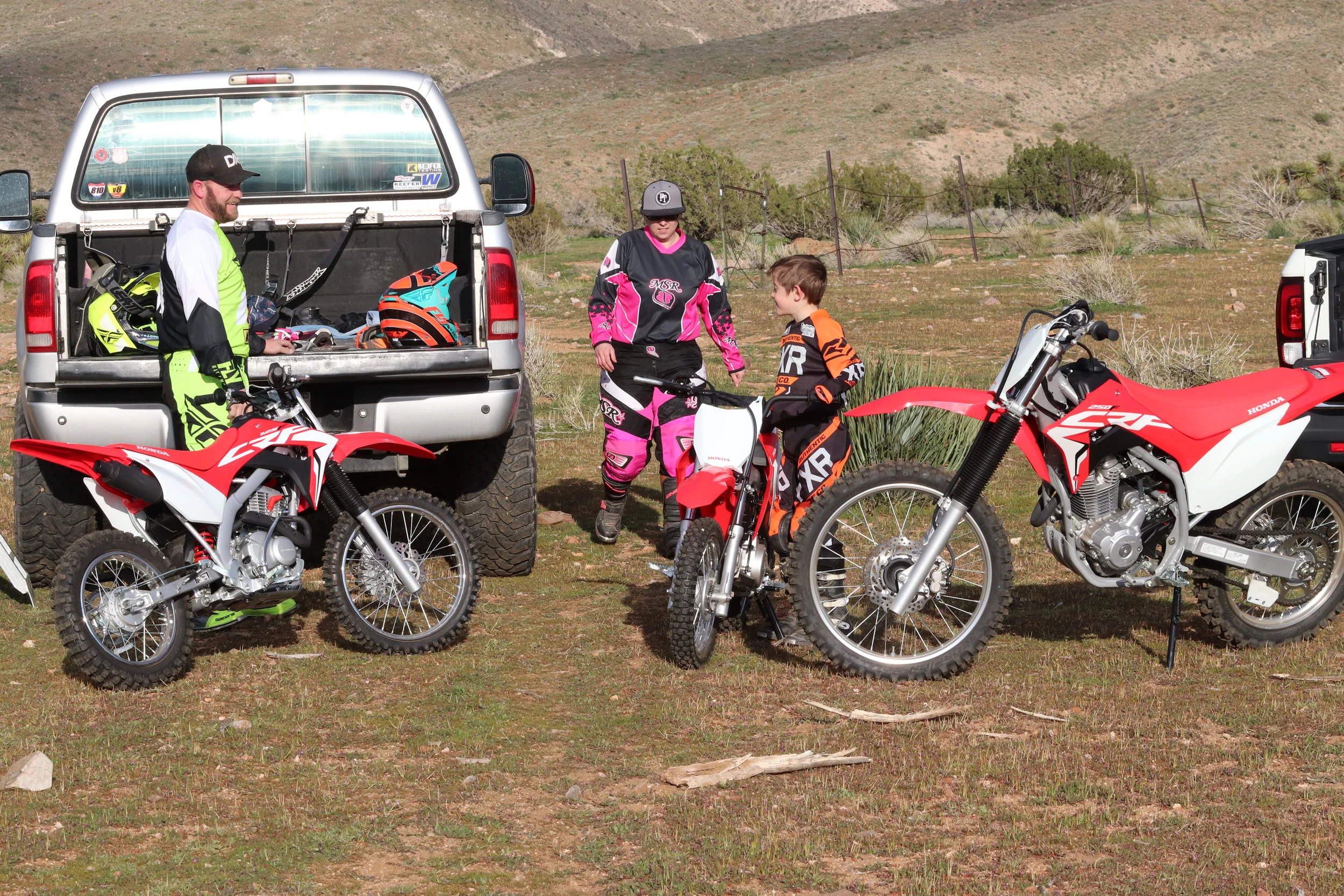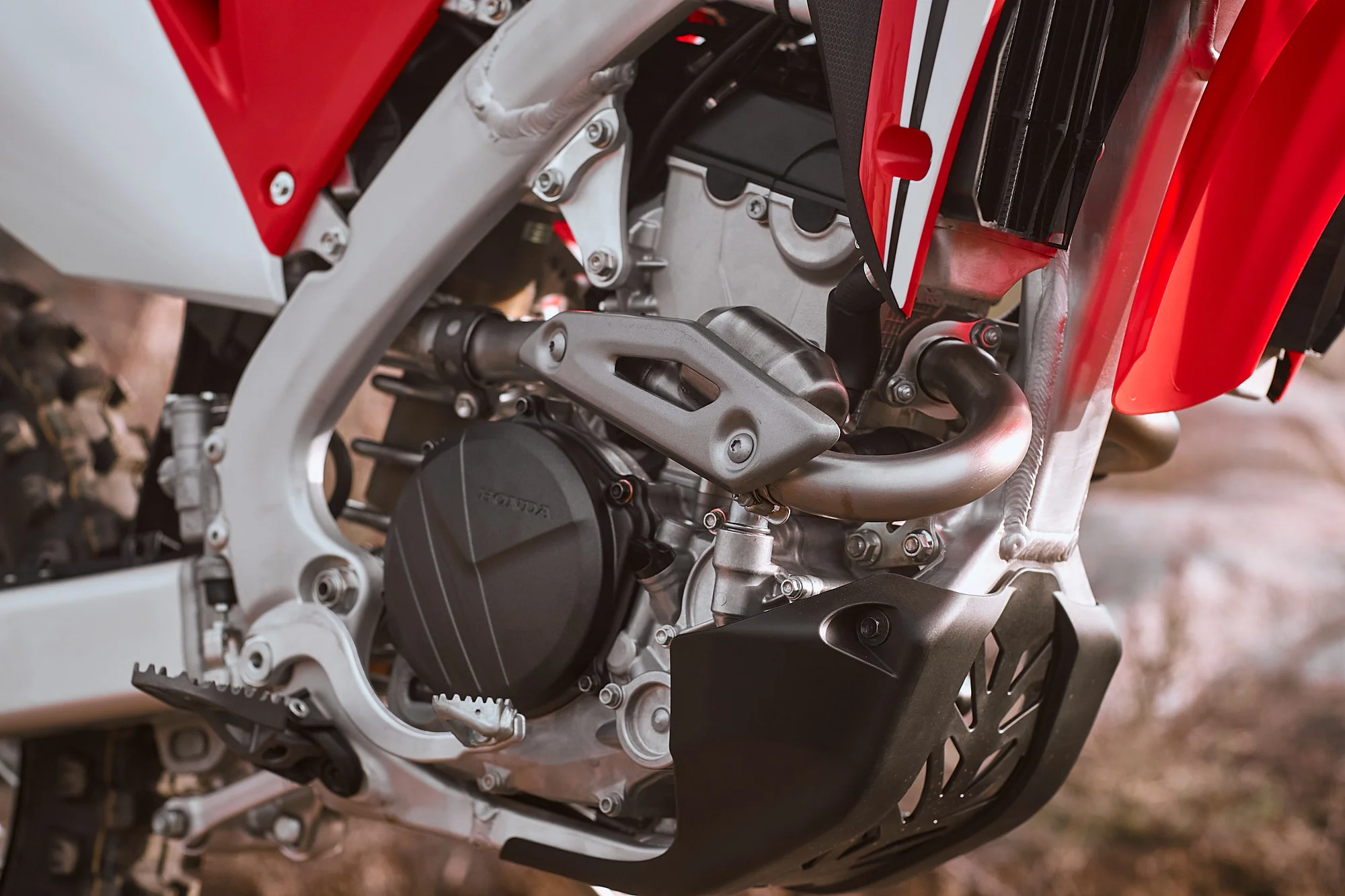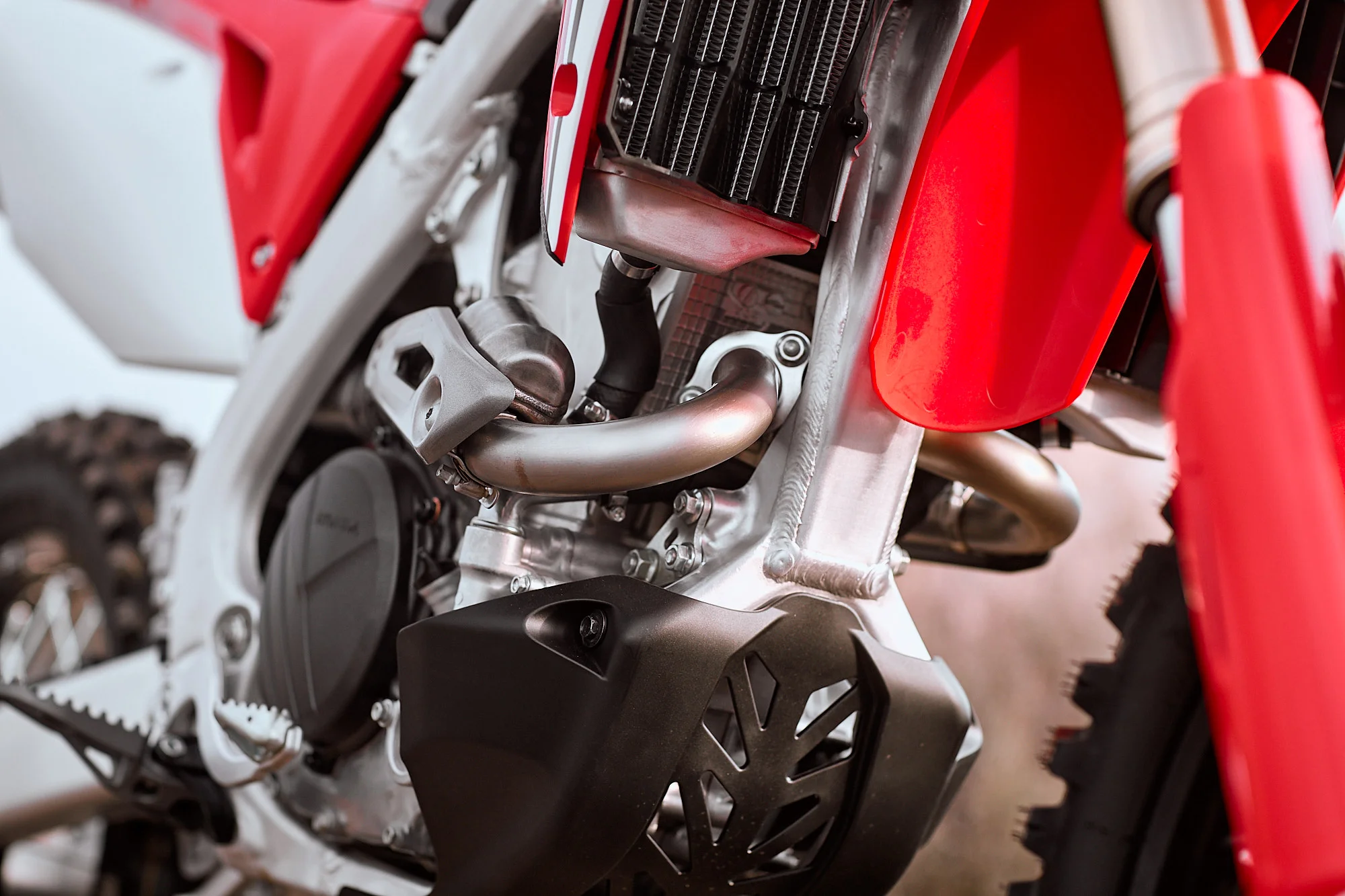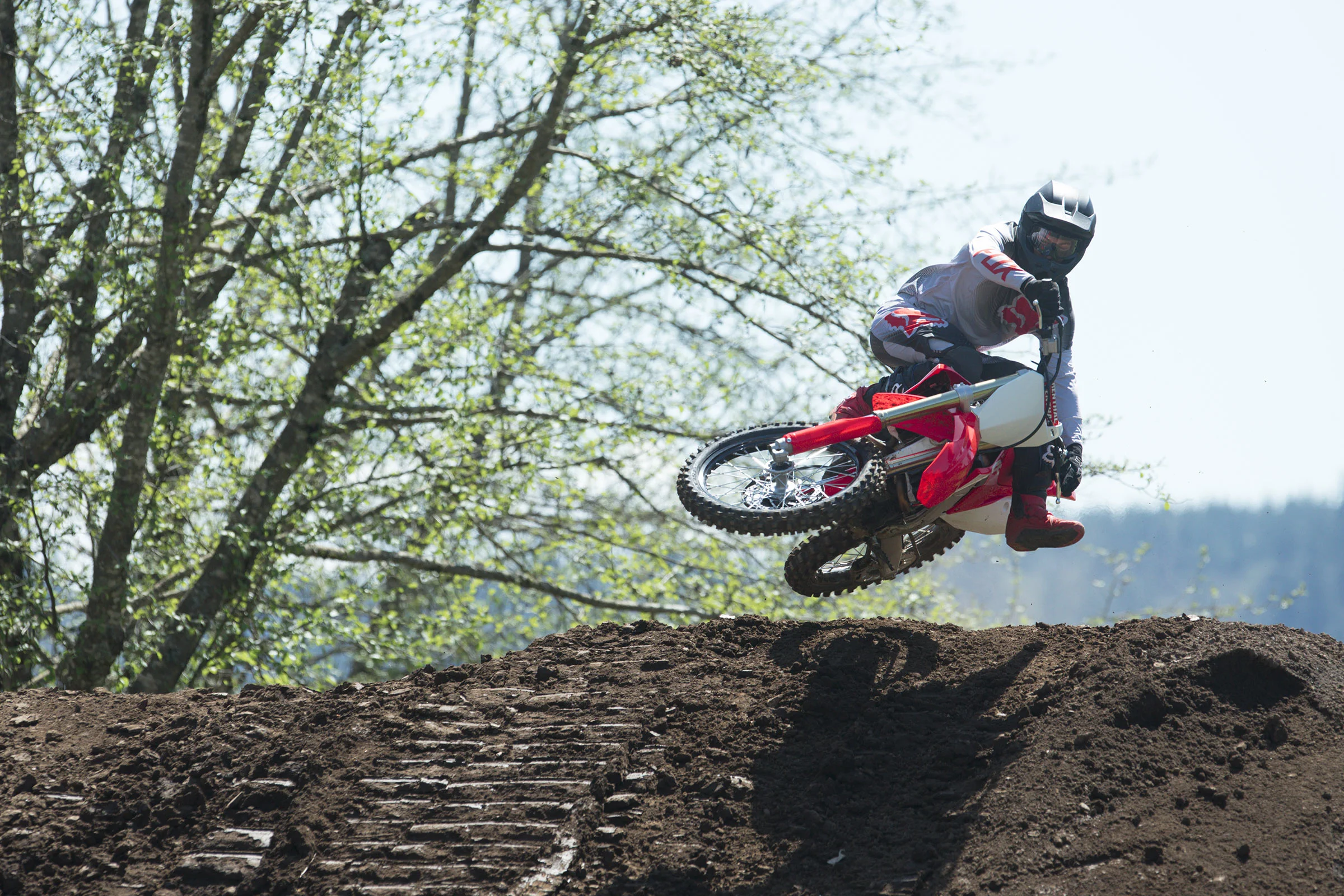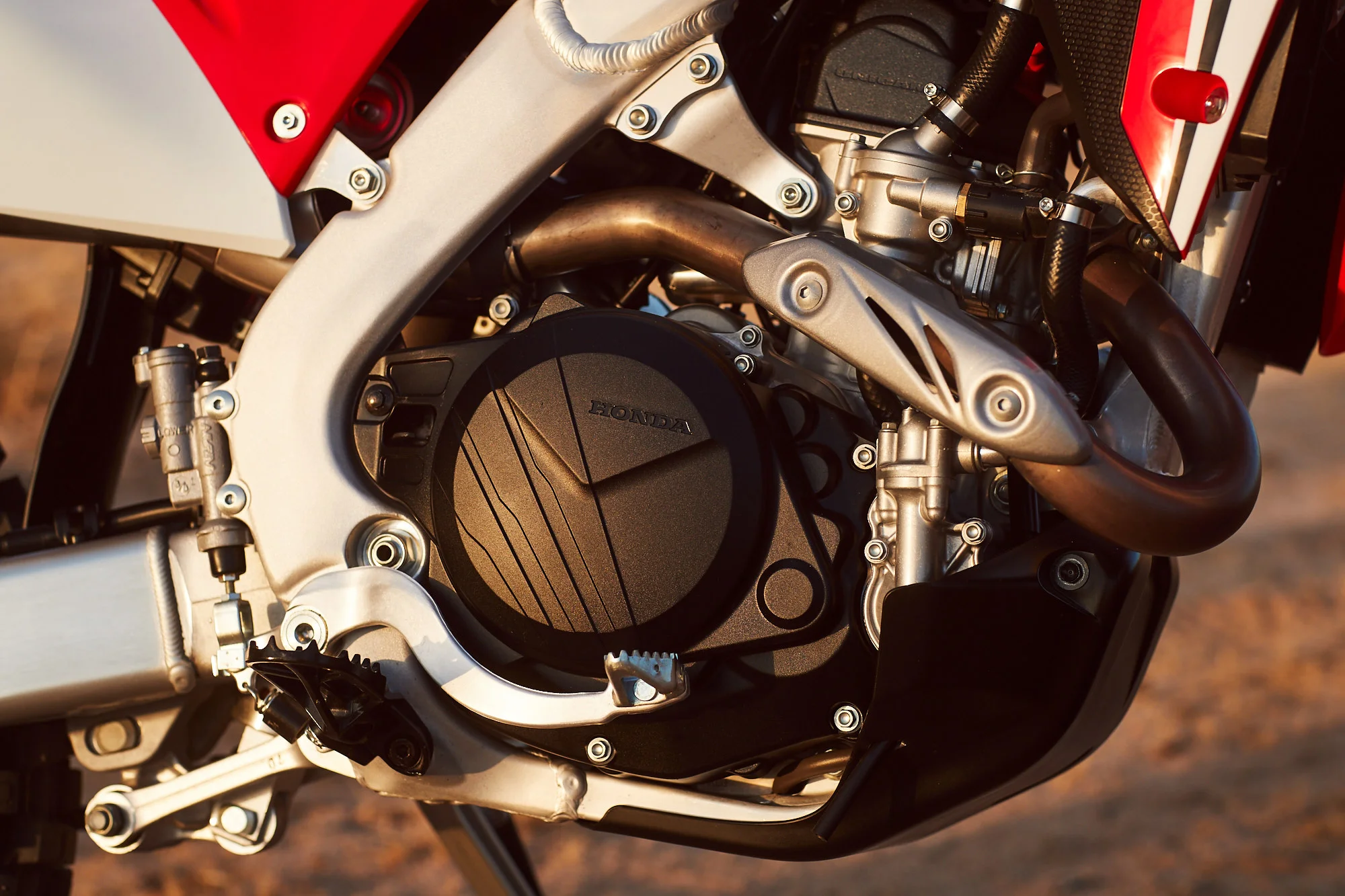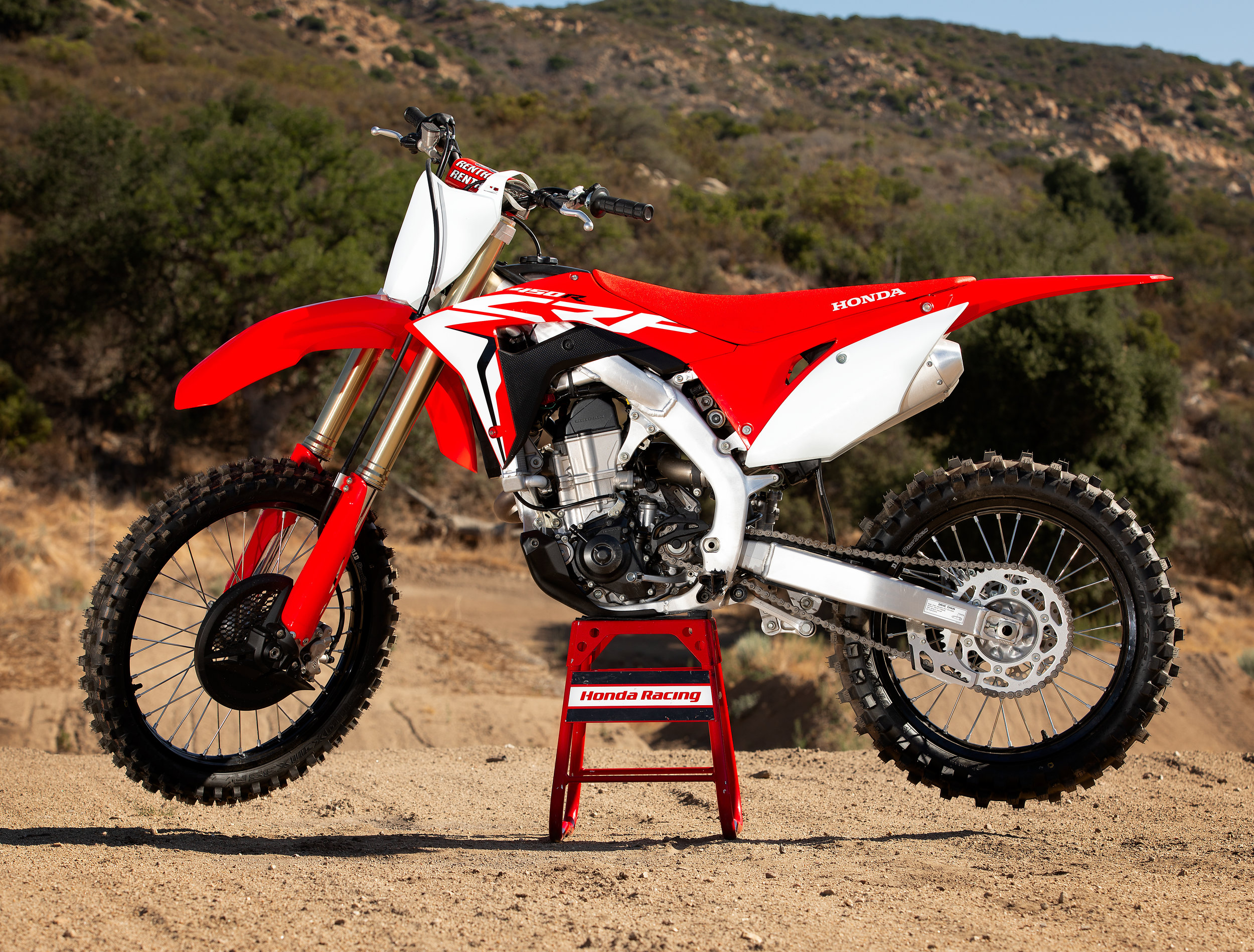Rider: Chris “Checkerz” Riesenberg
Age: 35
Skill Level: Vet Int.
Weight: 300+
Bike: 2022 Honda CRF450R
Previous Bike: 2019 Honda CRF450R
After over 8 years of absolutely zero riding, and basically 12 years since I could even be classified as a weekend warrior; Kris Keefer re-ignited the fire within all of us crazy moto guys. An invite to the 2019 Keefer Tested 450 Shootout meant it was time to toss my leg over a bike again. Two years later, I’m back at the track nearly every weekend tossing out air wheelies (mostly on purpose) and butt whips with my buddies and I even line up behind the gate every now and again. Once upon a time I would show up and be the fast guy at the track, but these days I’ve been relegated to a mid-pack Vet Intermediate. Enough about me, let’s dig into the real reason you clicked this… the 2022 Honda CRF450R.
Before we begin, I really have two benchmarks to compare the 2022 CRF450R to… my previous bike, the 2019 Honda CRF450R and my 2019 Keefer Shootout “winning” pick, the Yamaha YZ450F. My buddy owns one of these and we swap bikes often. These are rapid reactions as I have only a couple of hours on the bike I purchased down at Storm Lake Honda right when they became available.
BIGGEST IMPROVEMENT
I really enjoyed my 2019 Honda CRF450R, especially on stadium style and indoor tracks. The more aggressive I was, the better the bike felt; but it was just simply rigid. A really good suspension setting certainly helped, and I was shocked that the Works Chassis Lab intermediate mounts/hangers made a very noticeable difference… but it still was harsh.
The 2022 Honda CRF450 has none of that rigidness and I can go noticeably longer before my arms are shot. It still delivers a very connected feeling to the terrain under you which is important to me as a rider who heavily relies on front end feel and steering.
THE SURPRISE
From reading the reviews, shootouts, and tests; I had a pretty good idea that the chassis rigidity was going to be much improved. I basically was expecting a more comfortable version of my 2019 model. What I found is what puts this bike in the running to potentially become the favorite bike I’ve ever owned.
Back in the 2019 Shootout, the Honda ranked 4thfor me. I bought one because I have a great dealer relationship, and I’ve never ridden anything except Hondas since I was on CR80s back in the 90’s. Number one for me was the Yamaha YZ450 because it had an amazingly smooth power delivery that made it easy to go fast and the suspension and chassis was connected yet comfortable. Honda made huge strides with the chassis on the 2022, but the surprise was definitely the smooth, linear power delivery.
All last year I struggled with rutted turns on my 2019. I would either turn out too soon or the front wheel would want to pop over the rut. I could help this problem by running in the slower “vet” map, but then my big ass would have to work a lot harder to get the “oomf” out of corners to clear some of the bigger jumps. I typically elected to run the standard map 1 and mostly thought my cornering issues were rider skill issues.
Alas, I hopped on the 2022 Honda CRF450R and immediately I was able to rail ruts like it was 2004 again and I was at the top of my game. In fact, last night I drug a bar in a rut for maybe the first time in my life. It was amazing. The 2022 Honda CRF450R goes where you want it to go, is nimble, and the power is predictable, smooth, and there is plenty of it. I’m excited to ride it back to back with my buddy’s YZ450 to see which power delivery I prefer. I’ll report back in a future update about that.
(NOTE: This feedback is all standard map 1 without TC turned on. I have enjoyed it so much I haven’t even had a chance to play around with the other settings… sorry Keefer, I’ll work on being a better tester!)
TO BE IMPROVED
Being a Honda rider my whole life, I haven’t spent a ton of time on a hydraulic clutch. I’ve previously been pretty hard on clutches by feathering it instead of using throttle control. The trend continued on my 2019 CRF450R because of trying to control the massive power hit in corners. The times I’ve been on bikes with a hydraulic clutch, I was indifferent to having one or not. So far on the new Honda, I like the hydraulic clutch and I am tending to abuse it less. Most of that I believe is due to the smooth power and the effectiveness of the clutch when you tap it.
So why is it under “to be improved?” It isn’t the clutch action, but the lever. From the showroom the lever came adjusted extremely far from the bar making it a reach even with my big hands. It does have a good bit of adjustment to move the lever and I was able to move it in. However, once adjusted in, the lever pulls to my fingers right at the engagement point. I had to compromise running it a bit further out to ensure I’m getting full engagement when pulling in the clutch. I’ve also always really loved the feel and shape of the Works Connection levers; however, they don’t make a clutch lever for the 2022 Honda CRF450R.
FINAL QUICK THOUGHTS
· In my opinion, Honda continues to have the most comfortable rider triangle on the market.
· The stock suspension is impressive. I’m far from the ideal weight and normally avoid riding stock suspension at all costs. Even hitting some fairly large jumps I’m not fully bottoming, and it has good comfort. It definitely can use some work on the shock in the bumps for me, but that’s expected when you are over 100lbs heavier than the “ideal” weight for the setup.
· All red is sexy. It’s tough to beat the look of a Honda. I take pride in creating unique looks for my bikes, but I found it super challenging to find a better look than stock. We’ll see if I’m able to pull it off.
WHAT’S NEXT?
First off, I need to get suspension dialed in for me. I’m way too heavy for stock suspension and it honestly makes me nervous riding with it. I’ll be swinging up to my local Race Tech Service Center, PDR Performance to get RT Springs and Gold Valves with personalized valving put in.
Beyond that, I don’t see a need for performance parts currently; so, I’ll be focused on “look good, ride good” elements. I have plastic and graphics on order for a unique look and my Guts Racing seat cover just came in the mail. No bike of mine is complete without bling from Works Connection, and we’ll add a handful of their protection goodies on there too.
Down the road, when it snows up here in Minnesota, I typically do a full overhaul on my bike. The goal is to put enough hours on my 2022 before then to justify doing just that over winter. With the extra downtime I’ll likely send my forks out to SGB Racing to get some sweet looking coatings done, design a new plastic/graphics scheme, and will look into updating any weaknesses I find with the bike.








